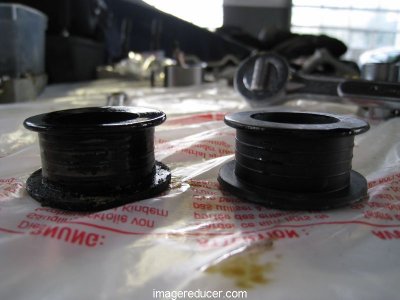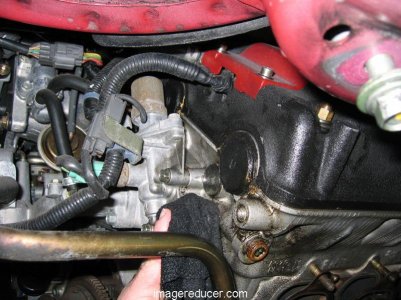I hear stories of people using hondabond on cam plugs and oilpan gaskets and still having leaks after they are replaced. There is nothing wrong with using hondabond as long as you use it correctly and have a clean surface for it to seal to. i personally use it almost on a dailly basis and have had no problems what so ever. when i first started working on cars in general i learned very quickly how to do it and that it definentally seals a lot better than just the seal from the pan gasket or cam plugs. clearly on the honda service manual it says to use liquid gasket around the cam plugs. tomorrow i will post a pic of the page. Also on the oilpan gasket you need to put a dab of honda bond right where the oilpump mates with the block and where the rear main seal plate mates with the block.
The correct way to clean a surface to get ready for hondabond would be that you need to remove all old hondabond with a wire brush. Then take a clean rag and spray it with brake clean and wipe the surface down very good. There can be no old sealant on the surface. Next you will run a bead of sealer around the cam plug in the middle of the sealing surface. Last make sure you install the cam cam asap and let it dry for atleast 20 minutes before there is any contact with oil.
The correct way to clean a surface to get ready for hondabond would be that you need to remove all old hondabond with a wire brush. Then take a clean rag and spray it with brake clean and wipe the surface down very good. There can be no old sealant on the surface. Next you will run a bead of sealer around the cam plug in the middle of the sealing surface. Last make sure you install the cam cam asap and let it dry for atleast 20 minutes before there is any contact with oil.








